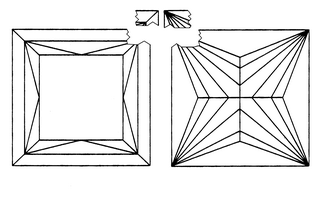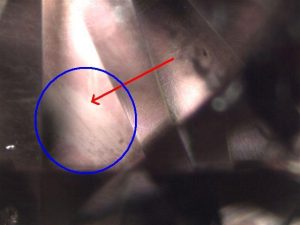- Calf’s Head Diamond
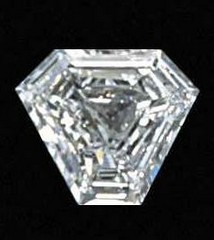
Diamond cut or shaped to look like a triangle with all three corners cut off, similar in outline to the head of a calf.
- Canary Diamond
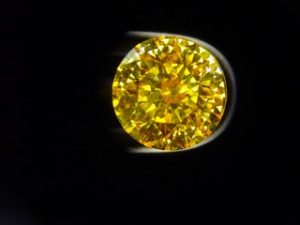
Term used to describe an intensely or vividly bright-yellow fancy colour diamond.
- Cape Series Diamonds
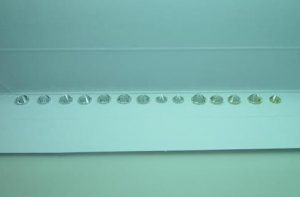
A broad scale of diamond colour grades that ranges from a near colourless, almost undetectable pale yellow to increasingly tinted yellow. Once it has enough yellow saturation to qualify as a fancy colour, it is no longer called a Cape Series diamond.
- Carat
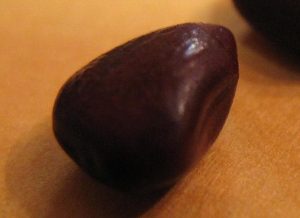
The standard unit of measuring the weight of a diamond. The origin of the word traces back to ancient times when diamonds were weighed on balances against carob beans, which held a consistent weight. One carob bean, or carat, weighs 1/5 of a gram.
- Carbon
Diamonds are made of pure carbon that has been subjected to and crystallised under enormous heat and pressure. Without the pressure, graphite is formed instead of diamond. Other forms of carbon can be found in substances like coal, but these are impure forms of carbon.
- Carbon Spots
Small black graphite inclusions in a diamond. Diamonds are made of pure carbon that has been subjected to and crystallised under enormous heat and pressure. At times, not all of the carbon crystalises, and small black spots may remain.
- Cavity
Type of diamond inclusion that appears as an opening or large indentation on the surface of a diamond. A tiny version of a cavity is a called a pit. Cavities affect both the clarity grade and the polish grade of a diamond.
- Certificate
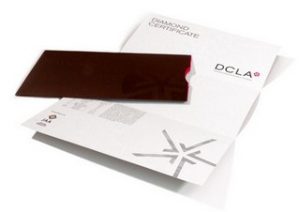
A complete, accurate report describing the specific characteristics of a diamond, issued by a recognised and independent diamond grading laboratory. A diamond certificate lists all the characteristics of a diamond that allows you to determine its current appraisal and fair market value. Also called a Diamond Grading Report. A diamond certificate is not an appraisal and does not contain a monetary value. Click here for a guide to the information that a diamond certificate must have.
- Chameleon-Type Diamond
A very rare type of diamond that changes colour when exposed to different light and heat conditions.
- Champagne Diamond
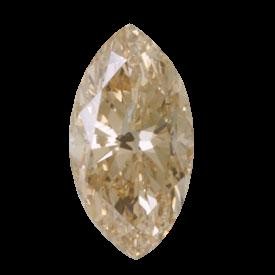
Refers to a coloured diamond that is light-brown or light brownish-yellow in colour.
- Chip
- CIBJO

The World Jewellery Confederation, an international confederation of national jewellery trade organizations. CIBJO’s purpose is to encourage harmonisation, promote international cooperation in the jewellery industry, and to consider issues that concern the trade worldwide. Foremost among these is to protect consumer confidence in the industry.
- Clarity
Term used to describe the relative presence or absence of inclusions in a diamond. Most diamonds, when formed, contain imperfections of one kind or another. Clarity, sometimes called purity, is one of the four c’s of diamond grading that determines the overall diamond quality and value.
- Clarity Enhancement
Any artificial treatment or process meant to improve the appearance of a diamond’s clarity. Laser drilling and fracture filling are examples of diamond clarity enhancement. Click here to learn more about diamond clarity enhancements.
- Cleavage
Type of inclusion that appears as a fairly smooth split or crack in a diamond, found along a plane of weakness. Cleavage is due to the directional hardness of diamonds.
- Closed Table
Trade term for a diamond that has a relatively small table in relation to the size of the diamond. A small table reduces the amount of brilliance, but may increase the amount of fire.
- Cloud
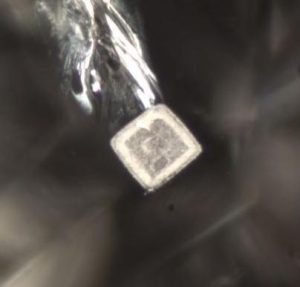
Cluster of pinpoint inclusions creating a hazy or milky area in a diamond. A diamond cloud can range from extremely sparse and faint, to dense and heavy. Clouds may also be small and localised, or spread throughout an entire diamond and affect the transparency.
- Coated Diamond or Coating
- Cognac
Refers to a coloured diamond that is dark brown in colour.
- Cold Laser Inscription
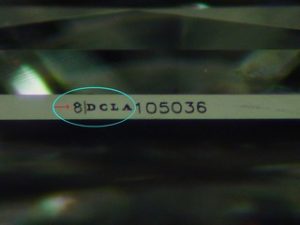
The use of a very fine, precise laser beam to write a grading report number or customised personal message on the girdle of a diamond, generally for identification purposes. Cold laser inscription is 100% safe for diamonds, compared to hot laser inscription. The laser inscription is invisible to the naked eye and can only be seen with a magnifying loupe. Click here to learn more about diamond laser inscription.
- Colour
Term used to describe the relative presence or absence of body colour in a diamond. Diamonds are either cape series diamonds or coloured diamonds.
- Coloured Diamond
Any diamond with a noticeable body colour other than white. Colour in diamonds is caused by either various impurities trapped in the diamond crystal as it was forming in the earth, or by irregularities in the crystal structure itself. Some coloured diamonds fall into the valuable fancy colour category of diamonds.
- Conflict Diamonds
Diamonds that originate from areas controlled by rebel forces that are opposed to the governments in power, and are used to finance wars against these governments. Along with the other resources like oil and timber The Kimberley Process has been put in place to combat trade these diamonds, also known as’blood diamonds‘. Click here to learn more about conflict diamonds and the Kimberley Process.
- Crown
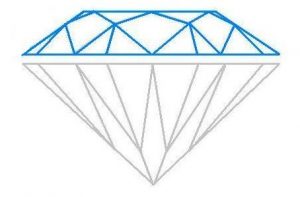
Upper part, or ‘top half’ of the diamond, above the girdle.
- Crown Angle
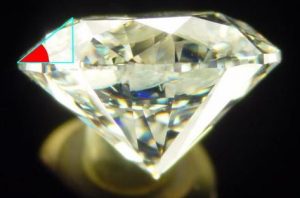
Angle measured between the girdle plane and the bezel facets. Crown angle together with table size determine how much fire (dispersion) and brilliance a diamond shows.
- Crown Height
- Crown Height Percentage
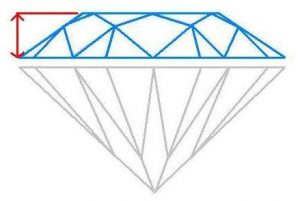
Crown Height expressed as a percentage of the diameter.
- Crystal
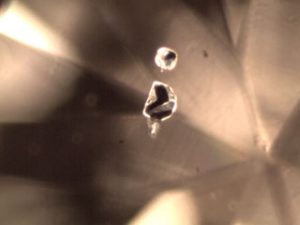
Type of inclusion where a mineral deposit, or sometimes another diamond, is trapped inside the diamond. Crystals often look like bubbles of various shapes and sizes.
- Cubic Zirconia
Colourless, transparent, man-made material that is often used to imitate diamond – a diamond simulant. The chemical name is zirconium dioxide (ZrO2).
- Culet
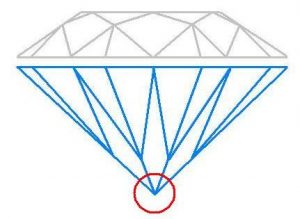
Tiny point on the bottom of a brilliant cut diamond, or the bottom edge of a step cut diamond. A culet can be prone to damage, thus diamonds are usually set in jewellery in such a way that the culet is protected.
- Cushion Cut
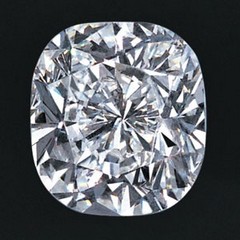
Diamond cut or shaped into a squarish or rectangular outline, with rounded corners. A brilliant cut cushion is one of the diamond shapes that can display hearts & arrows.
- Cut
Can refer to any or all of the following: proportions, polish, symmetry, and/or shape and style of cutting (brilliant cut or step cut). The overall cut grade is one of the four c’s of diamond grading that determines the overall diamond quality and value.
- Cut Grade
Qualitative description of the overall make of the diamond, taking into consideration the proportions, polish, and symmetry. Cut is one of the four c’s of diamond grading that determines the overall diamond quality and value.
- Cut-for-Weight
A diamond that is fashioned so as to minimise the amount of rough diamond crystal cut away. Carat weight may be gained, but brilliance, fire, and beauty are lost. The resulting proportions can make some diamonds look ‘bulgy,’ ‘lumpy’, ‘deep,’ or ‘undersize,’ while others may be flat or have symmetry deviations.
The Diamond Certification Laboratory of Australia (DCLA)
Buy and sell diamonds with the help of the experts
